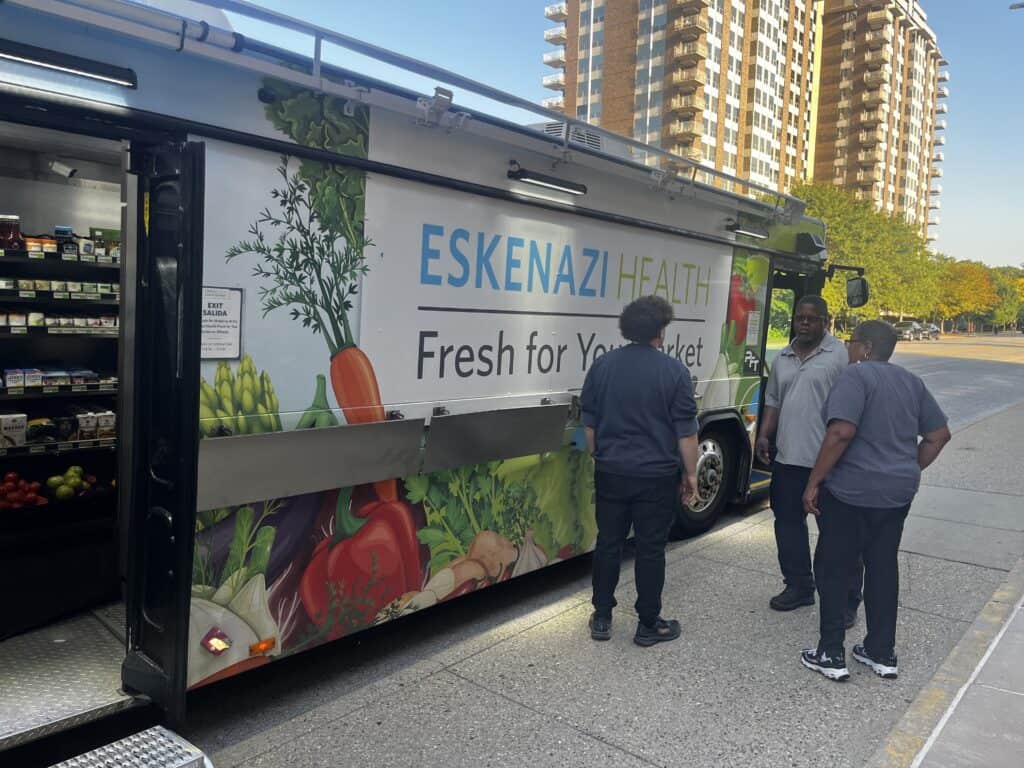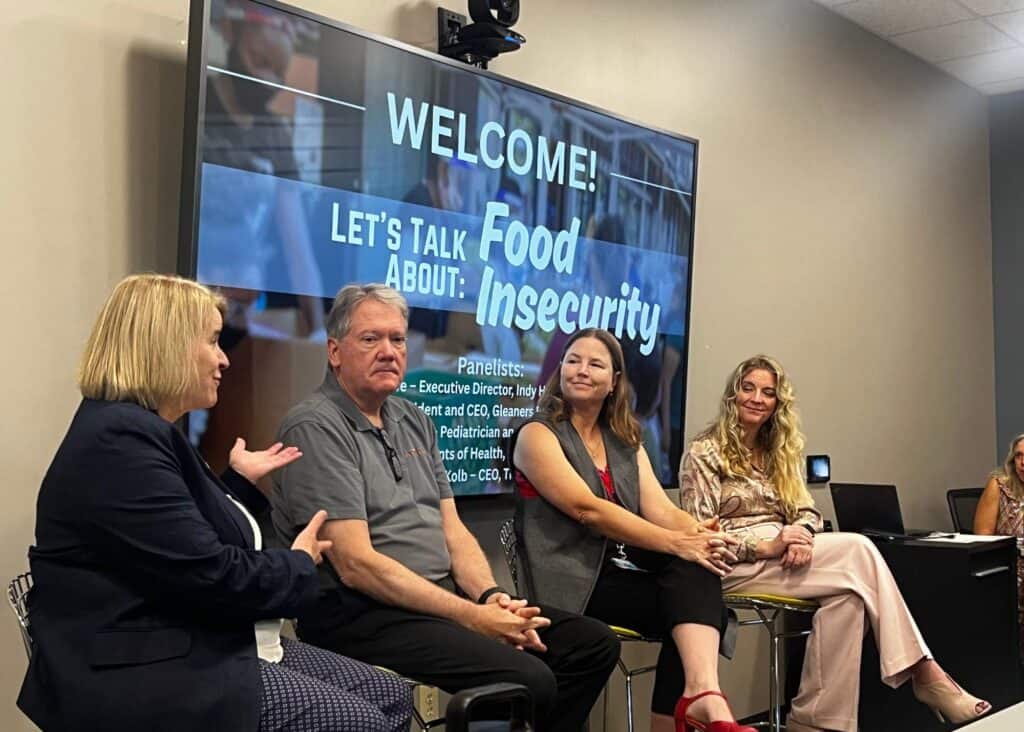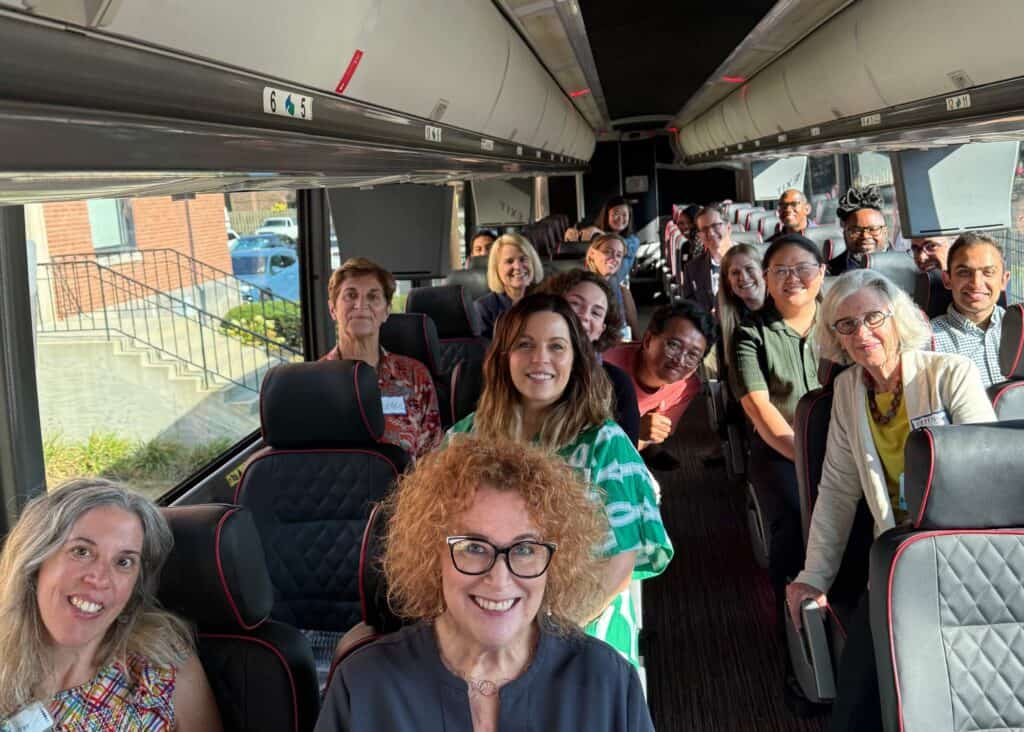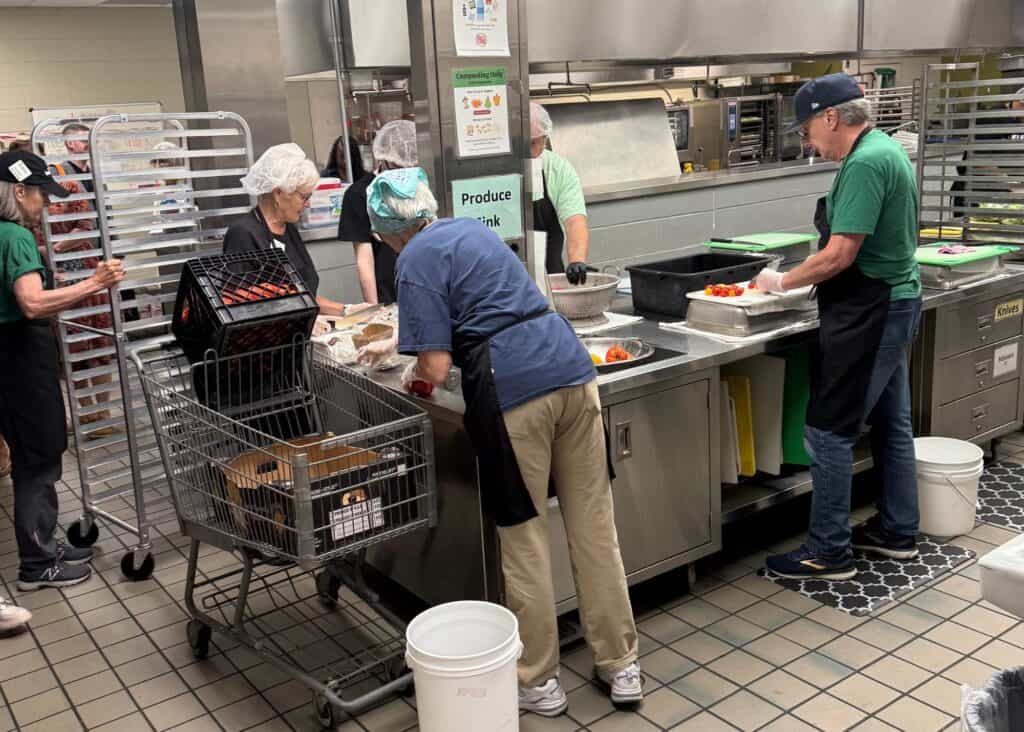
Understanding Hunger: A Day of Learning
From mobile markets to meal programs, fundholders explore the nonprofit landscape tackling hunger.
The Indianapolis Foundation, along with the CICF Collaborative, recently invited fundholders, professional advisors, and community partners to step into the realities of food insecurity throughout Central Indiana.
The goal? To educate those who guide philanthropy and community investment on the scale of the challenge—and the solutions already in motion across Marion County, Hamilton County, and surrounding areas.
A moving start: Touring the Fresh for You Market on Wheels
The day began with a tour of Eskenazi Health’s Fresh for You Market on Wheels, a full-sized IndyGo bus that has been repurposed as a bright, welcoming grocery store. Inside, shelves filled with fresh produce from Kroger — peppers, oranges, onions, carrots — and pantry staples make the space feel less like a bus and more like a neighborhood market.
“This is both a market and a pantry,” explained Tedd Grain, Vice President and Director of Social Determinants of Health at Eskenazi Health Foundation and Eskenazi Health.
The Fresh for You Market on Wheels expands the availability of food beyond Eskenazi’s Fresh for You Market, located at 720 Eskenazi Ave., just outside the main entrance to Sidney & Lois Eskenazi Hospital. By bringing similar essential groceries directly into five food-insecure neighborhoods through its mobile market, Eskenazi ensures that healthy, affordable food is accessible even to those who cannot easily reach the downtown location.
“Anyone can shop here, but patients who screen positive for food insecurity automatically receive a $30 voucher on their after-visit summary. It’s not much, but it’s enough to get through the week,” Grain said. “Food is medicine. You can’t prescribe health if people go home to an empty fridge.”
The tour of the mobile grocery store, which was parked in front of the English Foundation Building, set the stage for the rest of the day, underscoring the deep connections between healthcare, dignity, and access to food.

Expert voices: A panel on food insecurity
Next, participants heard from a panel of experts representing Indy Hunger Network, Gleaners Food Bank, Eskenazi Health, and The Milk Bank. Each panelist shed light on how their organization addresses hunger from a unique but interconnected angle:
- Indy Hunger Network: Improving access through system-wide coordination and advocacy. Kate Howe, executive director.
- Gleaners Food Bank: Distributing millions of pounds of food across Central Indiana. Fred Glass, president and chief executive officer.
- Eskenazi Health: Integrating nutrition into healthcare through its Food as Medicine program. Dr. Deanna Reinoso, Medical Director, Social Determinants of Health at Eskenazi Health
- The Milk Bank: Ensuring fragile infants have access to donor milk for early-life nutrition. Freedom Kolb, CEO of the Milk Bank.
Panelists shared sobering statistics about food insecurity: 40% of Indiana households can’t make ends meet, even though most have at least one working adult. A living wage is estimated at $18–$21/hour, yet nearly half of Indiana workers earn less, said Glass with Gleaners Food Bank.
“The pull-yourself-up-by-the-bootstraps mentality requires you to have the boots,” he added. “People ask why there’s so much need when unemployment is low. The truth is wages aren’t keeping up with the cost of living. These are working families, doing their best, and still not making it.”
Another panelist emphasized that addressing food insecurity can be complex. “You can't solve food insecurity just by pumping more food out into the community,” said Kate Howe, executive director of the Indy Hunger Network.
“It's not always an issue of how many meals households need. It's also an issue of how people can access the meals that are available,” Howe said. “At Indy Hunger Network, we connect people to the programs that are out there. But if you don't have transportation, childcare, or you don't have time because you're working two and three jobs, you can't necessarily spend your business hours applying for benefits.”
Freedom Kolb of the Milk Bank also highlighted the critical needs among families with premature and medically fragile infants. The Milk Bank works to ensure newborns have access to safe, pasteurized donor human milk. With demand rising more than 20 percent this year, the organization is working to expand its impact through operational support, maternal crisis response, and upstream education to prevent life-threatening nutrition gaps.

Site visits: Seeing solutions in action
After the panel, attendees boarded buses to see hunger relief in action at two local nonprofits:
- A Longer Table (formerly Patachou Foundation), which ensures school meals are fresh, consistent, and built to last.
- Second Helpings, which rescues surplus food, prepares meals for nonprofits, and offers culinary job training. Participants enjoyed lunch prepared by Second Helpings’ chefs as a conclusion to the day’s insights.


Across the bus tour, the panel, and the site visits, a single truth emerged: food insecurity is not just a food problem—it’s a poverty problem. It is about access, equity, dignity, and health.
The organizations highlighted how collaboration is essential: from policy coordination and advocacy to food distribution, to healthcare interventions, to school-based and early childhood nutrition. Each fills a gap, and together they form a network of solutions.
What’s next
To help guide philanthropy toward the greatest impact, each participating organization was asked to identify its most urgent funding need or high-impact program in need of support. Those responses, along with volunteer opportunities, were shared with attendees as a follow-up resource.
For fundholders and professional advisors, this day was designed to educate and inspire—offering a deeper understanding of the nonprofits working tirelessly to address hunger, and equipping participants with the knowledge to direct their generosity where it can matter most.
As Grain of Eskenazi said, “Medicine alone can’t heal families without food. If we want healthier communities, we must treat food as essential.”